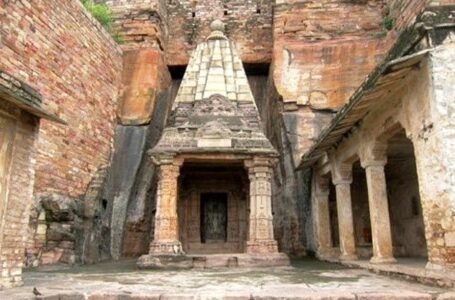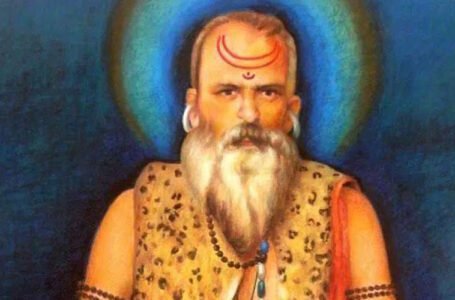The Legend and Legacy of Kashi Vishwanath Jyotirlinga
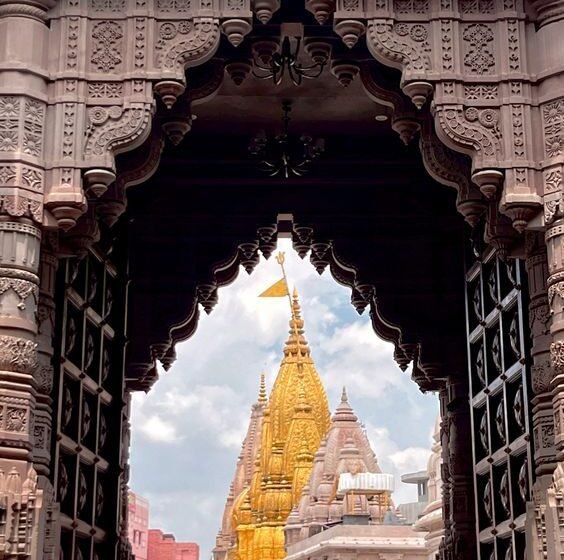
Kashi Vishwanath temple in Banaras is one of the most revered and visited jyotirlingas of India. It is a monument to India’s rich spiritual and cultural heritage and is located in the holy city of Varanasi. With a millennium-long history, this temple has seen countless pilgrims come and go, empires rise and fall, and unending devotion from its devotees.
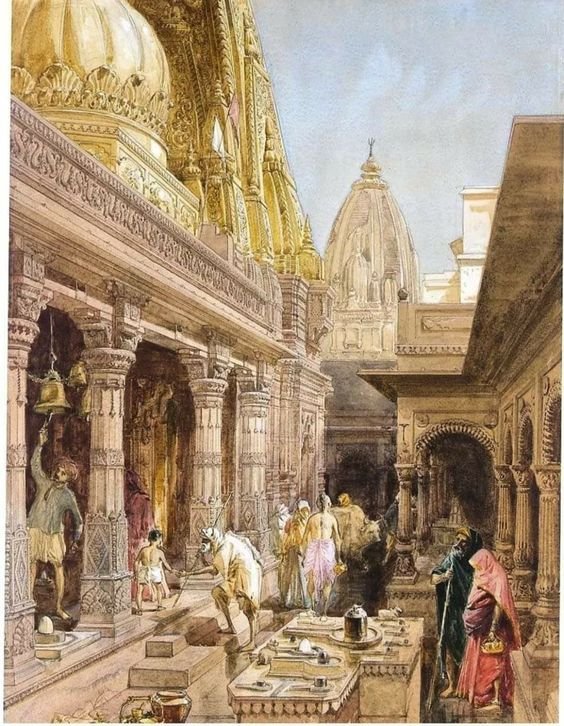
The legendary city of Varanasi, also referred to as Kashi or Benares, is deeply entwined with the history of the Kashi Vishwanath Temple, which has ancient roots. One of the seven most sacred cities in Hinduism, Kashi is thought to be the home of Lord Shiva. There are many legends about Varanasi’s holiness, and the city itself is steeped in mythology. It is said to be the location where Lord Shiva performed the Tandava, the cosmic dance of destruction. It is frequently referred to as the “City of Lord Shiva”. Further contributing to the city’s divine significance is its connection to the Ganges River, which is revered in Hinduism.
According to legend, the temple has a long history and is referenced in several Hindu texts, such as the Kashi Khanda and the Skanda Purana. Legend has it that Lord Shiva himself installed the Jyotirlinga here.
Both the Skanda Purana and the Brahmavaivarta Purana have sections titled “Kashi Khanda” and “Kashi Rahasya” that are devoted to the city of Varanasi.
There were 1099 temples in all, according to the Kashi Khanda, 513 of which were dedicated to the worship of Shiva. According to the scripture, the previous name of the Vishvanath temple was Moksha Lakshmi Vilas. There were five mandapas (halls) in the temple. The innermost sanctuary, or garbhagriha, was home to the Vishwanath lingam. The Jnana mandapa to the east, the Ranga mandapa to the west, the Aishvarya mandapa to the north, and the Mukti mandapa to the south are the remaining four mandapas.
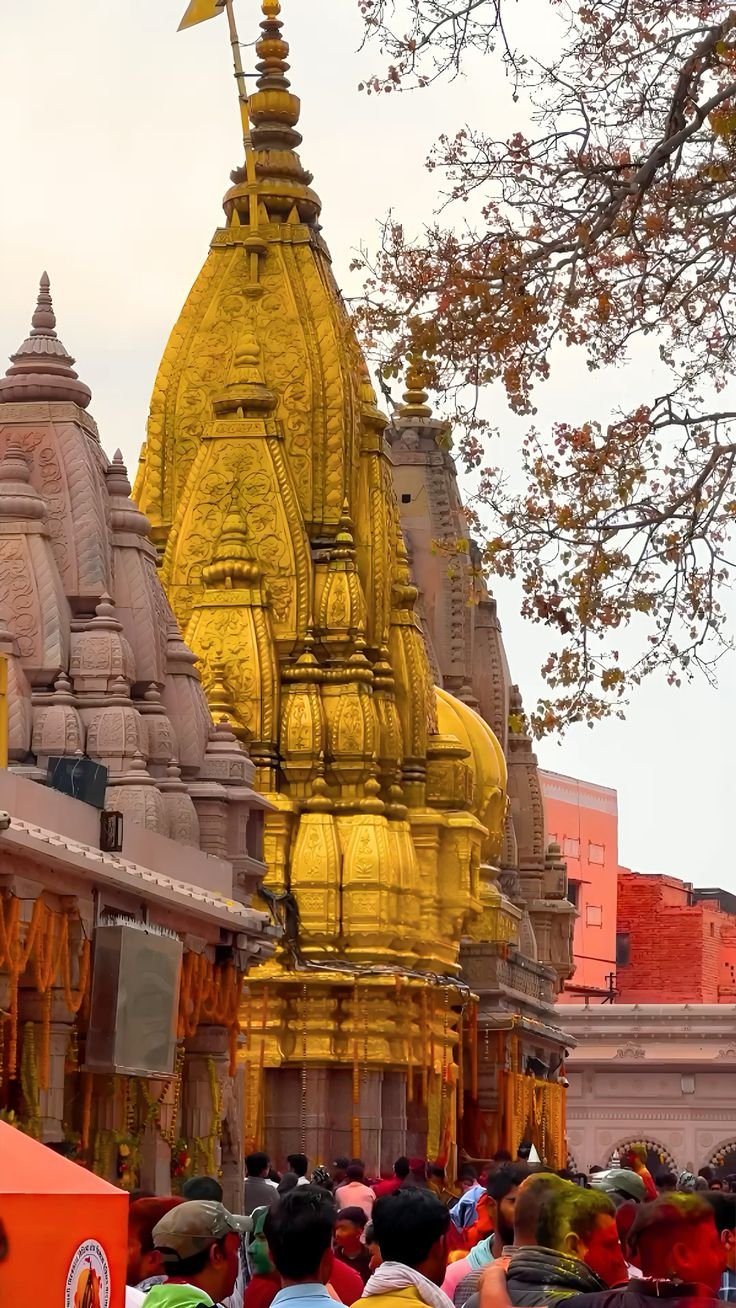
Originally called the Adi Vishveshwar Temple, the original temple was built in centuries past by a devotee by the name of King Harishchandra. It saw multiple reconstructions and renovations over the ages, reflecting the shifting religious beliefs and architectural trends of the times.
The Ghurids demolished the original temple in 1194 after Mu’izz al-Din Muhammad ibn Sam conquered Jayachandra of Kannauj, and then destroyed the city of Kashi. The Razia Mosque was built in its stead a few years later. Under Sultan Iltutmish of Delhi’s (1211–1266) reign, the temple was rebuilt in 1230, close to the Avimukteshwara Temple. During Sikandar Lodi’s reign (1489–1517), it was destroyed once more.
During the late 17th-century reign of Mughal emperor Aurangzeb, one of the most important moments in the temple’s history took place. The Kashi Vishwanath Temple was to be demolished, and Aurangzeb ordered that a mosque—the Gyanvapi Mosque—be built in its stead. In order to save the original Jyotirlinga from being destroyed, it was moved to a temporary location within the temple.

Following Aurangzeb’s reign, devout Hindus made a concentrated effort to reestablish the temple in its original location. Queen Ahilyabai Holkar of Indore constructed the present-day temple complex in the eighteenth century. It is worth noting that Ahilyabai Holkar of Indore was a well-known monarch renowned for her contributions to the building of temples and the Hindu revival movement.
The gold plating on the spire of the Kashi Vishwanath Temple has earned it the nickname “Golden Temple.” Three pure gold domes donated in 1835, each made up of one tonne of gold donated by Maharaja Ranjit Singh, have also been plated in gold.
The guardian deity of Varanasi and the Kashi Vishwanath Temple is thought to be Kaal Bhairav, a manifestation of Lord Shiva. Kaal Bhairav is supposed to make sure that no one with impure intentions can enter Varanasi. According to legend, Kaal Bhairav punished Lord Brahma for his haughtiness by chopping off one of his five heads, symbolizing Lord Shiva’s supremacy.

The Annapurna Temple, dedicated to Annapurna Devi, the goddess of nourishment, is located next to the Kashi Vishwanath Temple. Legend has it that Lord Shiva and Goddess Parvati once got into a light-hearted dispute over the value of food. Goddess Parvati vanished to illustrate her point, leaving everyone on Earth hungry. Lord Shiva responded by traveling to Varanasi in the guise of a beggar. Here, Goddess Annapurna fed him, and in gratitude Lord Shiva promised that Varanasi would never experience poverty.
Numerous myths describe how worshiping Shiva can free one from death and aimlessness (saṃsara). When Shiva devotees die, Shiva’s messengers take them straight to his abode on Mount Kailash, avoiding Yama’s judgment. It’s a common belief that when someone passes away naturally at the Vishwanath temple, Shiva himself blows the mantra of salvation into their ears.
Rangabhari Ekadashi, or Phalgun Shukla Ekadashi, is observed as a festival of colours. Tradition has it that Baba Vishwanath returns to Kashi prior to Holi, having taken on the form of Mother Bhagwati, a cow. The sound of numerous damroos beating can be heard throughout the temple complex. We have been carrying out this custom for more than 200 years. They perform Baba’s Tilak on Vasant Panchami.

The Kashi Vishwanath Temple in Varanasi is a representation of spirituality, devotion, and cultural legacy. At this holy temple, rituals are carried out that are more than just religious practices; they are profound experiences that unite devotees with the divine. They offer a window into the elaborate customs and values that have been upheld for ages. Going to the Kashi Vishwanath Temple is a journey within, to seek the blessings of Lord Shiva and the way to spiritual enlightenment, rather than merely traveling to a sacred location.

